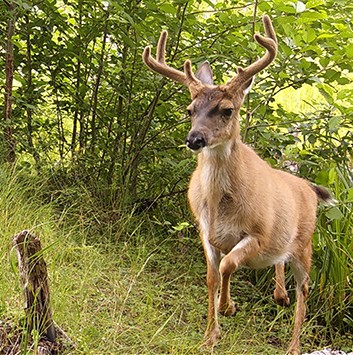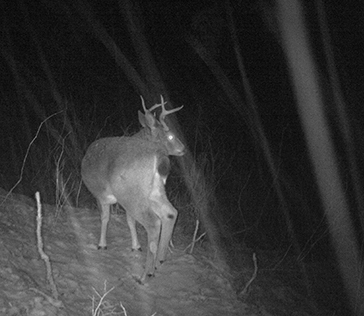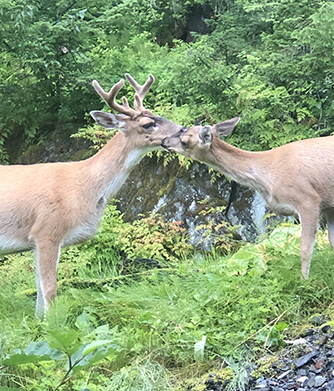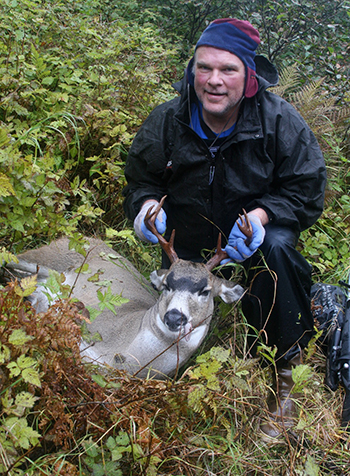Alaska Fish & Wildlife News
October 2025
What triggers the timing of the rut for deer?
Ask a Wildlife Biologist

What triggers the timing of the rut for deer?
From students in the “Outdoors Biology” class, Juneau-Douglas High School
Wildlife Biologist Steve Bethune has the answer. Steve is based in Sitka and is the area biologist for northern Southeast Alaska (Game Management Unit 4), including Baranof, Chichagof and Admiralty Islands, home to lots of deer and very popular with hunters.
Photoperiod. The length of daylight regulates hormonal activity. Does going into estrus is tied to photoperiod. Photoperiod also regulates buck rutting behavior (which is tied to antler development). Will estrus in does trigger bucks? Well, any hunter knows it supercharges it, but there has to be something else (photoperiod) because bucks are getting ready (antlers harden, velvet sheds, sparring, rubs, neck swell) before does go into estrus. Bucks begin antler drop shortly after the rut is over.

It really is a fascinating topic and the timing is beautiful. Just when pregnancy becomes most demanding for the doe in spring is right when resources start becoming abundant again. Fawns drop when the weather is the best and they have the maximum time to grow before resources and weather deteriorate. The does have enough time to regain fat reserves for the winter. Also, fawns dropping at the same time saturates the landscape with fawns, which overwhelms predators. I can’t get away from the word beautiful, it is so intricate and perfectly designed.

Of course, you know the bell curve, so there are outliers. Having my trail cameras has been very educational. I have documented rut behavior (bucks chasing does, flehmen response*) clear into April! But once breeding and fawn drop get outside of normal you lose the advantages. For example, if a fawn is born early there may not be enough browse for adequate lactation, or the fawn could be subject to late spring snows. Fawns born late are more susceptible to predation and have a shorter window before the next onset of winter.
An interesting aspect is that deer in more moderate climates tend to have a wider rut window because there isn’t the environmental limitations associated with deer in northern latitudes.

Then you get to places like southern Arizona and the rut is in January. I assume that’s so fawns are not born in the peak of the hot summer sun.
Also note is that moon phase does not appear to influence the rut.
*The flehmen response, also called flehmen reaction or flehmening, is a behavior in which an animal curls back its upper lip exposing its front teeth, and inhales - and then often holds this position for several seconds.
Have a question for a wildlife biologist? Send it to riley.woodford@alaska.gov
Subscribe to be notified about new issues
Receive a monthly notice about new issues and articles.
